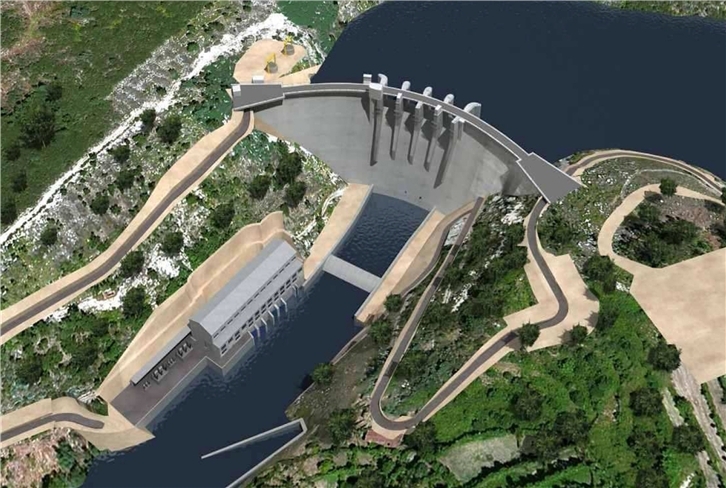News
2017-01-04 00:00:00.0Iberdrola constructs the Daivões power station tunnel - the first milestone in the Tâmega hydroelectirc power project (Portugal)
- La empresa ha superado con éxito el primero de los grandes hitos de este ambicioso proyecto, tras construir el cale del primer túnel de desvío del río Tâmega, que permitirá construir en los próximos meses la presa de Daivões
- Con una inversión de más de 1.500 millones de euros, el proyecto del Tâmega es una de las mayores iniciativas de la historia de Portugal en el sector de la energía hidroeléctrica e incluye la construcción de tres centrales: Gouvães, Daivões y Tâmega
Iberdrola has successfully completed the first of the major milestones set for the Tâmega project (in Portugal), namely the excavation of the diversion tunnel to feed the Daivões hydroelectric power station.
The tunnel in question has a length of approximately 400 metres (1300 ft) and since work began it has taken Iberdrola less than one hundred days to excavate and shore it up, which goes to show just how efficient and experienced Iberdrola is when it comes to this type of hydroelectric engineering projects.
Now that this construction phase is completed, Iberdrola will set to work on the inner concrete reinforcement lining and the cofferdams, which will enable them to divert the Tâmega river so that the construction of the dam and the Daivões power plant can begin.
The Daivões power station will be served by a dam with a height of 77.5 metres (255 ft) to feed two turbines, with a combined installed power of 114 MW and a production of 142 GWh. There will also be an additional 4 MW turbine that will add 17 GWh to the power station's output.
The Tâmega complex will comprise three large dams: Gouvães, Tâmega and Daivões, and altogether the associated electricity generating facilities will have an installed capacity of 1,158 MW and be capable of producing more than 1,760 GWh per year.
The construction work is being carried out on the Tâmega river in the north of Portugal, close to the city of Porto, and involves an investment of over 1.5 billion euros. It is estimated that the execution of this much-needed energy infrastructure will provide 3,500 direct and 10,000 indirect jobs throughout the construction phase.
Iberdrola currently has a project management and works supervision team made up of 54 people, and this number will rise as high as 165 during the most intense phases of the works.
One of the key points in this initiative, both for Iberdrola and for the Portuguese Government, is the creation of local employment in the area of the project, helping to revitalise the local economy and provide quality jobs for a large number of Portuguese companies.
The aim is for this project to bring growth to the Tâmega area over the next few years. In fact, it is estimated that the execution of this energy infrastructure will create 3,500 direct and 10,000 indirect jobs during the construction phase.
Furthermore, an operation and maintenance team shall be subsequently created for each of the power stations and it is hoped that they will be manned by a local workforce. One of Iberdrola’s priorities in all of its projects is for its eventual work teams to be staffed by employees from the regions in which they are implemented.
This initiative proves Iberdrola’s commitment to clean power generation technologies, including pumped storage and projects to develop marine wind power. Pumped storage is currently the most efficient power storage method, and the Tâmega river complex is going to have a storage capacity equivalent to 300,000 homes.
The leader in power storage in Europe as a result of pumped storage
Iberdrola is an eminent figure in power storage, with 4,400 MW installed via pumped hydroelectric storage. They also boast the largest facility of this kind in Europe: the Cortes-La Muela complex in Valencia.
These power plants are a safety net for the electrical power system, where power can be stored in an elevated reservoir by filling it with water pumped from a lower reservoir. This water is then used to produce electricity by passing it through a turbine to the reservoir below, generating a large amount of power at a very fast response rate, without releasing any kind of emissions into the atmosphere.
Pumped hydroelectric power plants provide supplementary services to the system and the capacity to supply reserve power using the excess energy generated during low consumption periods, which helps to cover market demand during peak times.








